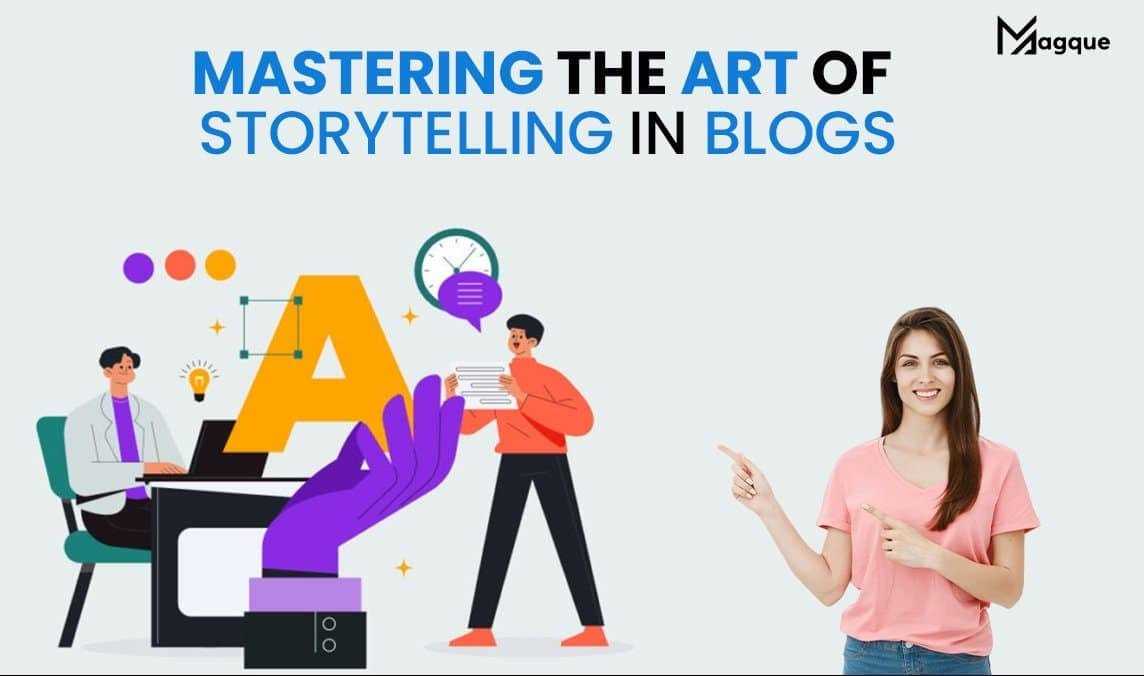Hey there, fellow bloggers and wordsmiths! Are you ready to take your blogging game to the next level? Well, buckle up because we’re about to dive deep into the enchanting world of storytelling in blogs. Crafting compelling narratives isn’t just reserved for novelists or screenwriters – it’s a skill that can elevate your blog from ordinary to extraordinary.
So, what’s the secret sauce to mastering the art of storytelling in blogs? Let’s break it down.
Understanding the Power of Storytelling
First, let’s talk about why storytelling is crucial for your blog. What captures your attention more: a dry list of facts or a captivating story that draws you in from the get-go? Humans are hardwired to connect with stories. They evoke emotions, spark curiosity, and keep readers glued to the screen.
Know Your Audience
Before spinning tales, you must know who you’re talking to. Understanding your audience’s preferences, interests, and pain points will help you tailor your stories to resonate with them on a deeper level. Are they seeking inspiration, solutions to problems, or simply craving entertainment? Once you’ve got a handle on your audience, you can craft stories that speak directly to them.
Start with a Bang
The opening of your blog post is like the opening scene of a blockbuster movie – it sets the tone and hooks the audience. Don’t waste this precious real estate with generic introductions. Instead, dive straight into the action or pose a thought-provoking question to pique curiosity. Remember, you only have a few seconds to grab your reader’s attention, so make it count!
Create Compelling Characters
Even in non-fiction blogs, your characters are the heart and soul of your story. Your characters could be real people, fictional personas, or even abstract concepts – as long as they resonate with your audience. Give them depth, quirks, and motivations that readers can relate to. Whether sharing a personal anecdote or showcasing a customer success story, make your characters memorable.
Craft a Narrative Arc
Every great story has a beginning, middle, and end – and your blog posts should be no different. Start by setting the stage, introducing a conflict or challenge, and then offering a resolution or takeaway. This narrative arc creates a sense of anticipation and keeps readers engaged until the very end. Don’t forget to sprinkle in some twists and turns to keep things interesting!
Show, Don’t Tell
Instead of bombarding your readers with dry facts and figures, show them the story through vivid descriptions, dialogue, and anecdotes. Paint a picture with your words, allowing readers to visualize themselves in the narrative. Engage their senses – describe the sights, sounds, smells, and emotions to transport them to another world.
Inject Emotion
Emotion is the secret sauce that transforms a good story into a memorable one. Tapping into your reader’s emotions creates a powerful connection, whether it’s joy, sadness, fear, or excitement. Share personal experiences, heartfelt anecdotes, or inspiring triumphs that resonate with your audience emotionally.
End with a Bang
Just as crucial as the opening, the closing of your blog post should leave a lasting impression. Summarize your main points, offer a takeaway or call to action, and leave readers feeling inspired or enlightened. Consider ending with a cliffhanger or thought-provoking question to encourage further engagement and discussion.
Practice Makes Perfect
Like any skill, mastering the art of storytelling takes practice. Feel free to experiment with different narrative techniques, styles, and tones until you find what works. Pay attention to feedback from your readers and analytics to see which stories resonate the most. With time and persistence, you’ll become a master storyteller in no time.
So there you have it – the key ingredients to mastering the art of storytelling in blogs. Remember, storytelling isn’t just about spinning yarns – it’s about creating meaningful connections with your audience. So go ahead, unleash your creativity, and let your stories shine!
Now, it’s your turn – what are some of your favourite storytelling techniques for blogs? Share your tips and tricks in the comments below! Let’s continue the conversation and inspire each other to become better storytellers. And be sure to explore Magque, your go-to source for the latest and most intriguing updates in the realms of informative tips & reviews!
FAQs
Q1. Why is storytelling important in blogging?
Storytelling is essential in blogging because it helps to captivate and engage readers on a deeper level. By weaving narratives into your blog posts, you can evoke emotions, spark curiosity, and make your content more memorable. Stories also humanize your brand, making it easier for readers to connect with your message and values.
Q2. How can I find stories to tell in my blog posts?
Stories are everywhere – you need to know where to look. Start by drawing inspiration from your own experiences, whether personal or professional. Pay attention to everyday encounters, customer testimonials, or industry trends that you can turn into compelling narratives. You can also source stories from interviews, case studies, or relevant news articles.
Q3. What if someone else is a natural storyteller?
Storytelling is a skill that can be learned and honed over time. If you’re not a natural storyteller, don’t worry – practice makes perfect! Start by studying storytelling techniques used by your favourite authors, bloggers, or speakers. Experiment with different storytelling formats, such as anecdotes, metaphors, or testimonials, until you find your unique voice.
Q4. How long should my stories be in a blog post?
The length of your stories will depend on your audience, topic, and overall content strategy. Aim to keep your stories concise and to the point, but be bold and dive more deeply if the narrative calls for it. Remember to prioritize quality over quantity – it’s better to tell one impactful story than to cram multiple shallow anecdotes into a single blog post.
Q5. Can storytelling improve my blog’s SEO?
Absolutely! While storytelling may not directly impact traditional SEO factors like keywords or backlinks, it can indirectly improve your blog’s search engine rankings. Engaging content that keeps readers on your site for extended periods can reduce bounce rates and increase dwell time, which are positive signals to search engines. Additionally, compelling stories are more likely to be shared on social media, organically driving more traffic to your blog.
Read Also This:- How to Write Engaging Blog Content













